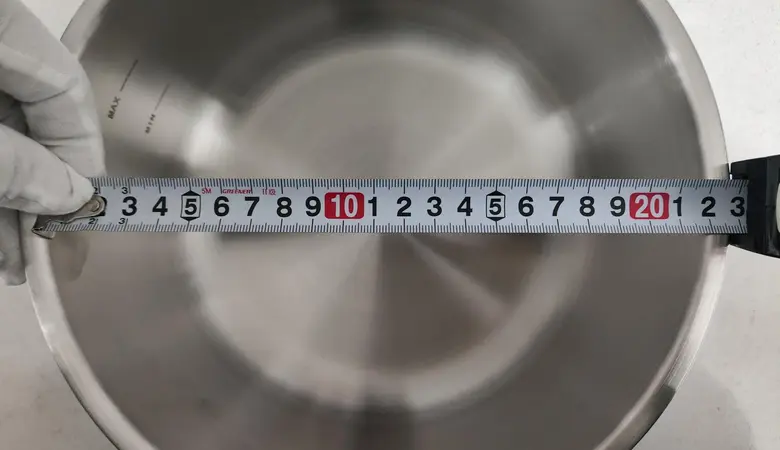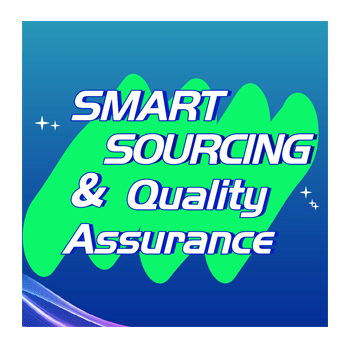
Effective quality inspections protect your reputation and ensure customer satisfaction. Review your current methods and see how they match up with these best practices.
Key Takeaways
• Set clear quality standards that include safety, durability, and customer expectations to guide your inspection process.
• Use consistent inspection methods at every stage—pre-production, in-process, and final checks—to catch defects early.
• Employ reliable tools, checklists, and digital solutions to improve accuracy and efficiency in quality inspections.
• Train your team regularly with hands-on methods and build a culture where quality is everyone's responsibility.
• Review inspection data often to find problems, make improvements, and keep your quality process strong and effective.

Quality Standards
Defining Quality
You need to define what quality means for your household goods. Quality goes beyond appearance. It includes safety, durability, and how well the product works. When you set clear definitions, you help your team understand what to look for during quality control. For example, you might check if a chair can hold a certain weight or if a kitchen tool resists rust. You should also consider customer expectations. If you know what your customers want, you can focus on those areas during product quality checks.
Setting Criteria
You must set specific criteria for each product. These criteria act as benchmarks for quality control. Use a checklist to make sure you do not miss any important points. Here are some examples of criteria you might use:
• Material strength
• Color consistency
• Size accuracy
• Safety features
• Packaging quality
You should review these criteria often. Update them when you improve your products or when you receive feedback. This helps you keep your product quality high and your inspection process effective.
Importance
Quality standards play a key role in your business. They guide your quality control process and help you avoid costly mistakes. When you follow strict standards, you reduce the risk of defects. This leads to better product quality and higher customer satisfaction. You also build trust with your buyers. Consistent product quality can set you apart from competitors. Remember, strong quality control protects your reputation and supports long-term success.
Tip: Review your quality standards at least once a year. This keeps your quality control process up to date and ensures your product quality meets market demands.
Inspection Process
Pre-Production
You set the foundation for product quality before production begins. In this stage, you review raw materials, components, and supplier certifications. You check if materials meet your standards and if suppliers follow your requirements. You also verify that production equipment works correctly. By catching problems early, you prevent defects from reaching later stages.
A strong pre-production inspection helps you avoid wasted resources. You can use checklists to make sure you do not miss any important steps. Many manufacturers use quality inspection software to track and document these checks. This software helps you organize data and spot trends over time.
Tip: Always communicate your expectations to suppliers before production starts. Clear communication reduces misunderstandings and improves results.
In-Process
You monitor quality during production to catch issues as soon as they appear. In-process inspections focus on critical points in the manufacturing line. You might check assembly steps, measure product dimensions, or test functions. These checks help you identify problems before they become widespread.
You should train your team to recognize defects and report them immediately. Quality inspection software can guide your team through each step and record inspection results in real time. This approach keeps your quality inspection processes consistent and reliable.
• Key in-process inspection points:
◦ Assembly accuracy
◦ Component fit
◦ Functionality tests
◦ Safety checks
You improve efficiency and reduce rework by addressing issues during production.
Final Checks
You perform final checks after production ends but before shipping products to customers. This stage confirms that finished goods meet all quality standards. You inspect appearance, packaging, labeling, and product performance. You also verify that products match customer requirements.
Final checks act as your last line of defense against defects. You can use quality inspection software to generate reports and store inspection data. These records help you analyze trends and improve your quality inspection processes over time.
Note: Final checks should never replace earlier inspections. Each stage plays a unique role in maintaining product quality.
Sample Size
You cannot inspect every single item in large batches. Instead, you select a sample size that represents the whole batch. The right sample size depends on batch size, product type, and risk level. You can use statistical methods to determine how many items to check.
A common approach is the Acceptable Quality Limit (AQL) method. This method helps you balance inspection effort and risk. Quality inspection software often includes tools to calculate sample sizes and manage inspection schedules.
| Batch Size | Suggested Sample Size | AQL Level |
|---|---|---|
| 120 | 8 | 1.5% |
| 500 | 32 | 1.5% |
| 1200 | 80 | 1.5% |
You should review your sample size strategy regularly. Adjust it based on product changes, customer feedback, or new risks. Consistent sampling helps you maintain effective quality inspection processes.
Remember: The goal is to catch defects early and ensure only high-quality products reach your customers.
Quality Inspection Solutions
Tools and Equipment
You need the right tools and equipment to achieve reliable quality inspection solutions. Simple tools like calipers, rulers, and gauges help you measure product dimensions. Specialized devices, such as hardness testers or color meters, allow you to check specific product features. These tools increase accuracy and help you find defects early.
You should calibrate your equipment regularly. Proper calibration ensures your measurements stay correct. Well-maintained tools also improve efficiency because you spend less time troubleshooting errors. Automated inspection systems can further boost your inspection process. These systems use sensors and cameras to check products quickly and consistently. You can reduce human error and increase the speed of your inspections.
Tip: Keep a log of tool maintenance and calibration dates. This habit helps you track equipment performance and avoid unexpected problems.
Checklists
Checklists form the backbone of many quality inspection solutions. You use checklists to make sure you do not miss any important inspection steps. A good checklist covers all critical points, such as material quality, assembly accuracy, and packaging standards.
You can create different checklists for each stage of production. For example, you might use one checklist for pre-production checks and another for final inspections. This approach helps you focus on the unique needs of each stage. Checklists also support consistency. When every inspector follows the same list, you get more reliable results.
You should review and update your checklists often. Product changes or new customer requirements may require you to add or remove items. Well-designed checklists improve both accuracy and efficiency in your quality inspection process.
Note: Encourage your team to suggest improvements to checklists. Their feedback can help you find better solutions and avoid missed steps.
Digital Solutions
Digital solutions have transformed quality inspection solutions in recent years. You can use quality inspection software to record data, track trends, and generate reports. This software helps you organize inspection results and makes it easy to share information with your team.
Quality inspection software improves accuracy by reducing manual errors. You can set up automatic alerts for out-of-spec results. This feature helps you respond quickly to problems. Digital solutions also boost efficiency. You save time by entering data once and using it for multiple reports or audits.
Many quality inspection solutions now include mobile apps. These apps let inspectors enter data on the shop floor. You get real-time updates and can spot issues faster. Digital solutions also make it easier to analyze large amounts of data. You can find patterns and make better decisions about process improvements.
Callout: Digital solutions do not replace skilled inspectors. You still need trained people to interpret results and take action.
You should choose quality inspection software that fits your needs. Look for features like customizable checklists, data analysis tools, and easy integration with your existing systems. When you use the right digital solutions, you improve both the accuracy and efficiency of your quality inspection process.
Quality Inspection Software
Benefits
You can transform your inspection process with quality inspection software. This software helps you collect and organize inspection data quickly. You do not need to rely on paper forms or manual spreadsheets. Quality inspection software lets you track every step of your inspection process. You can spot trends and identify problems before they grow.
You improve accuracy when you use quality inspection software. The software reduces human error by guiding you through each inspection step. You can set up automatic alerts for out-of-spec results. This feature helps you respond to issues right away. Quality inspection software also makes it easy to share information with your team. Everyone can access the latest data and reports.
You save time with quality inspection software. You can generate reports in seconds. You can also store inspection records for future audits. This software helps you meet compliance requirements and keeps your process organized.
Tip: Use quality inspection software to create custom checklists for each product line. This approach ensures you cover all critical points.
Implementation
You should start by listing your inspection needs before choosing quality inspection software. Think about the types of products you make and the data you need to collect. Look for software that offers customizable checklists, real-time data entry, and easy reporting.
You need to involve your team in the selection process. Ask for feedback from inspectors and managers. This step helps you find quality inspection software that fits your workflow. You should also check if the software integrates with your current systems.
You must plan your rollout carefully. Train your team on how to use the quality inspection software. Set clear goals and track progress. Review your process after a few weeks and make adjustments as needed.
Note: Regular updates and team feedback help you get the most from your quality inspection software.
Team Training
Training Methods
You need to train your team with clear and practical methods. Start with hands-on demonstrations. Show your team how to use inspection tools and follow checklists. Use short training sessions to keep everyone focused. You can also use videos or visual guides to explain each inspection step. Encourage your team to ask questions during training. This helps everyone understand the process better. Regular refresher courses keep skills sharp and help new team members learn quickly.
Tip: Pair new inspectors with experienced staff for on-the-job learning. This approach builds confidence and ensures everyone follows the same standards.
Building Culture
You create a strong quality culture by setting clear expectations. Remind your team that quality inspection is everyone’s responsibility. Celebrate when your team finds and solves problems. Use team meetings to share success stories and discuss challenges. When you value quality, your team will too. Open communication helps your team feel comfortable reporting issues. You should reward attention to detail and positive attitudes.
• Ways to build a quality-focused culture:
◦ Share inspection results openly
◦ Recognize team achievements
◦ Encourage feedback and suggestions
Accountability
You must hold your team accountable for inspection results. Set clear roles and responsibilities for each team member. Use checklists and inspection records to track performance. Review inspection data regularly with your team. If you find mistakes, discuss them and find solutions together. This process helps you improve efficiency and avoid repeated errors. When everyone knows their role, your inspection process becomes stronger.
Note: Accountability does not mean blame. Use mistakes as learning opportunities to help your team grow.
Common Pitfalls
Mistakes
You may face several common mistakes during household goods quality inspection. Sometimes, you might skip steps in your inspection checklist. This can lead to missed defects. Rushing through inspections often causes errors. You may also rely too much on visual checks and ignore functional tests. Inconsistent inspection methods can create confusion among your team. Poor documentation makes it hard to track problems or find patterns. If you do not review inspection data, you may miss chances to improve your process.
Tip: Take your time with each inspection step. Careful work helps you catch more issues.
Solutions
You can avoid these mistakes by using practical solutions. Start by standardizing your inspection process. Use clear checklists for every stage. Train your team to follow the same steps each time. Encourage inspectors to report any problems right away. Keep detailed records of every inspection. Review these records often to spot trends. Use digital tools to organize your data and make reporting easier. These solutions help you maintain high standards and reduce errors.
• Key solutions for common pitfalls:
◦ Standardize inspection steps
◦ Use detailed checklists
◦ Train your team regularly
Continuous Improvement
You should use inspection data to drive continuous improvement. Analyze your records to find recurring issues. Share your findings with your team. Work together to adjust your inspection process. Set new goals based on your data. Track your progress over time. Celebrate improvements and learn from mistakes. This approach helps you deliver better products and meet customer expectations.
Note: Continuous improvement keeps your quality inspection process strong and effective.
You can boost product quality and customer satisfaction by following these best practices. Set clear standards, use reliable inspection methods, and train your team well. Review your inspection process often to catch new issues. Stay updated with industry trends and always look for ways to improve.
Take action today—strong inspection habits help you deliver better household goods every time.
FAQ
What is the most important step in household goods quality inspection?
You should focus on setting clear quality standards. This step guides your entire inspection process. Clear standards help you catch defects early and ensure every product meets customer expectations.
Why do you need to train your inspection team regularly?
Regular training keeps your team’s skills sharp. You help everyone stay updated on new inspection methods and standards. Training also reduces mistakes and improves inspection accuracy.
What should you do if you find repeated defects?
You should analyze your inspection data to find the cause. Work with your team to fix the problem at its source. Adjust your inspection process or product design if needed.

Smart Sourcing & Quality Assurance Content Team
Article by Smart Sourcing & Quality Assurance Content Team
The Smart Sourcing & Quality Assurance Content Team is dedicated to delivering high-quality, easy-to-understand information that empowers our audience to navigate the complexities of global sourcing and quality assurance. Our team of writers has extensive experience in creating content across various fields, including procurement, supply chain management, quality assurance, market trends, and industry best practices. We specialize in sectors such as apparel, textiles, and consumer goods, providing targeted insights to help businesses in these industries optimize their sourcing strategies, ensure product quality, and maintain a competitive edge in the market.
Grow your business with TradeAider Service
Click the button below to directly enter the TradeAider Service System. The simple steps from booking and payment to receiving reports are easy to operate.


 in China Preventing Empty Boxes and Damage.png)
 vs. During Production Inspection (DPI) Which Do Sellers Need.png)